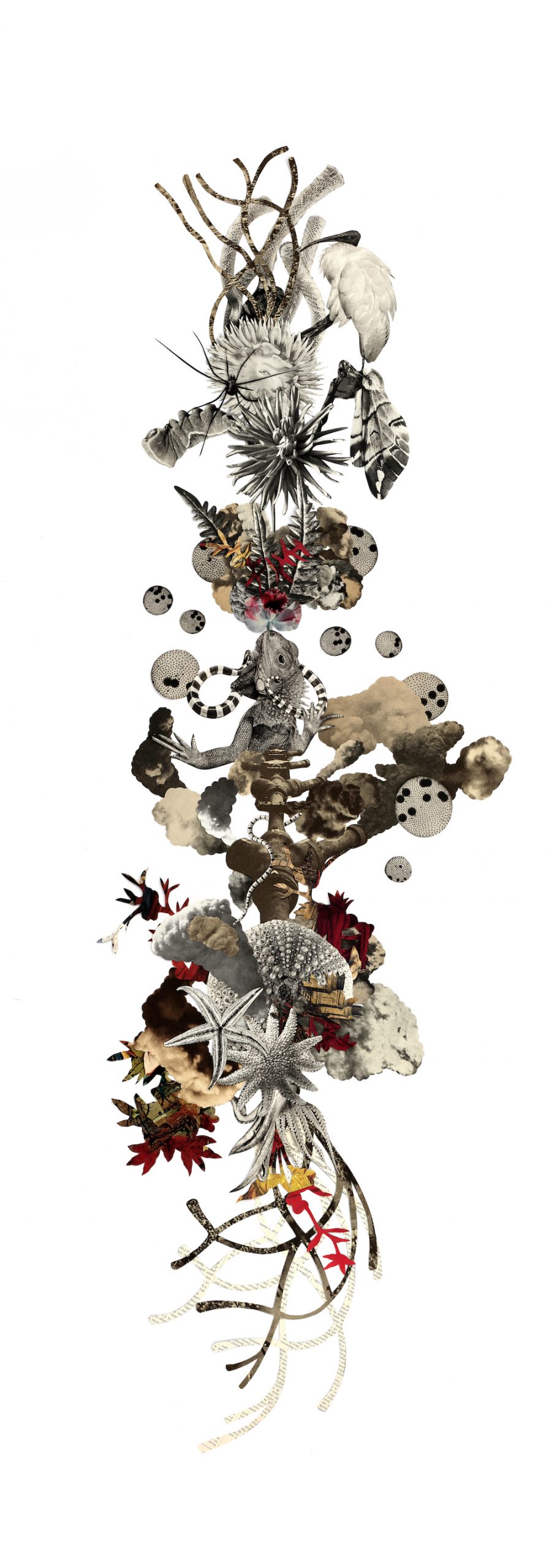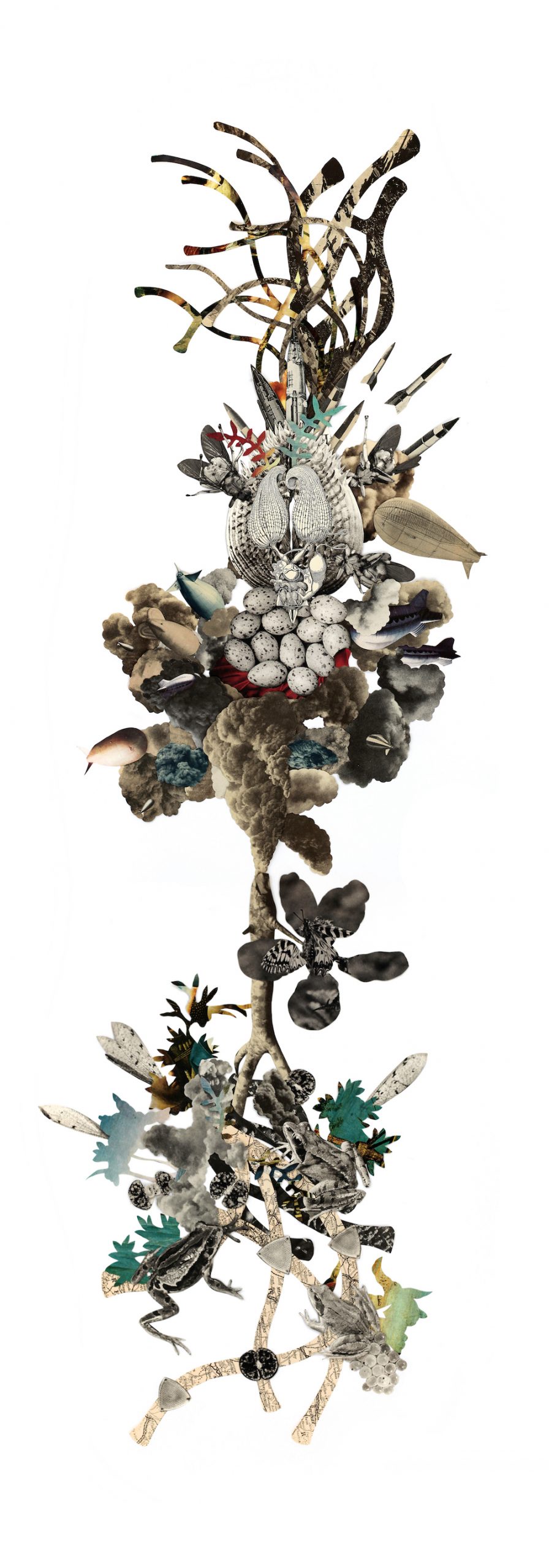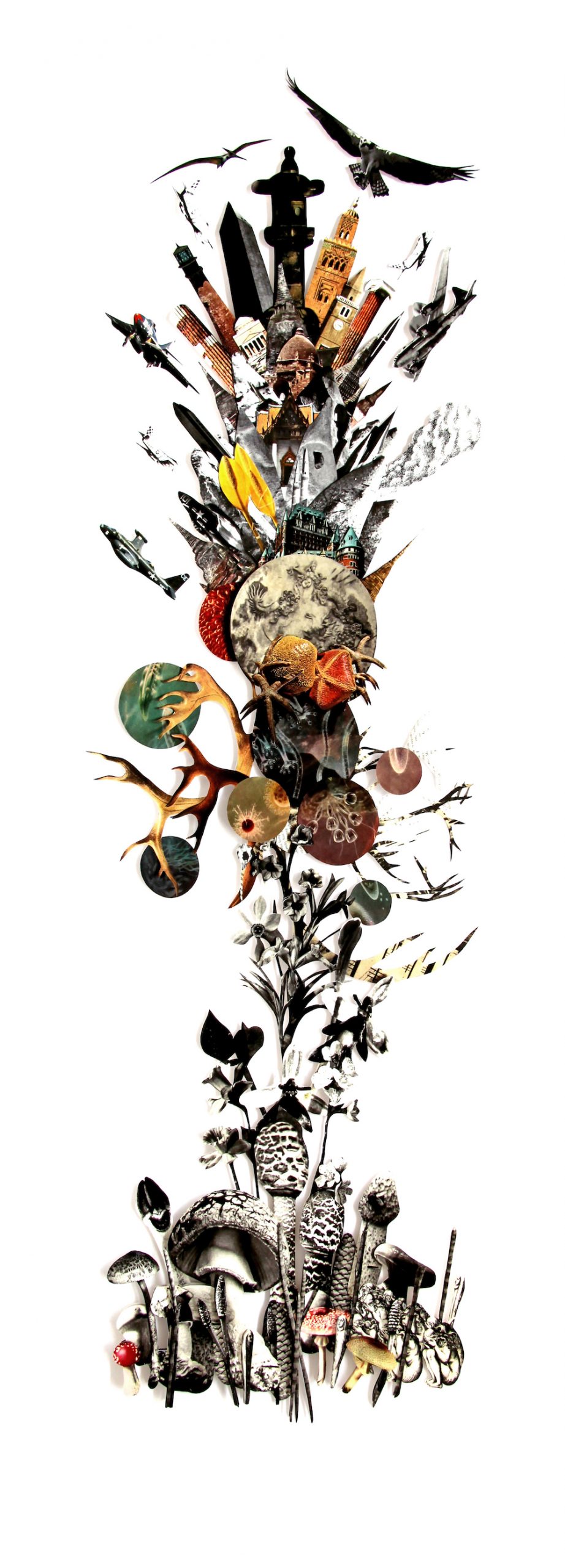Invisible Gardener
2017
Statement
THE INVISIBLE GARDENER
Barbara Wildenboer
Once upon a time two explorers came upon a clearing in the jungle. In the clearing were growing many flowers and many weeds. One explorer says, “Some gardener must tend this plot.” The other disagrees, “There is no gardener.” So they pitch their tents and set a watch. No gardener is ever seen. “But perhaps he is an invisible gardener.” So they set up a barbed-wire fence. They electrify it. They patrol with bloodhounds. (For they remember how H. G. Well’s The Invisible Man could be both smelt and touched though he could not be seen.) But no shrieks ever suggest that some intruder has received a shock. No movements of the wire ever betray an invisible climber. The bloodhounds never give cry. Yet still the Believer is not convinced. “But there is a gardener, invisible, intangible, insensible, to electric shocks, a gardener who has no scent and makes no sound, a gardener who comes secretly to look after the garden which he loves.” At last the Sceptic despairs, “But what remains of your original assertion? Just how does what you call an invisible, intangible, eternally elusive gardener differ from an imaginary gardener or even from no gardener at all?” ¹
In the Timaeus² Plato gives an account of how the universe was formed. It was especially the order and beauty he observed that made an impression on him. Plato focuses on the idea of a divine Craftsman/Demiurge who creates an ordered universe by creating a mathematical order from the pre-existing chaos.
Many natural phenomena are so appealing, delicate and fragile that they seem to be seems to be created solely for the pleasure and enjoyment of humans³. In The Invisible Gardener Barbara Wildenboer makes reference to the interconnectedness of all living things by creating visual simulations of nature that speak of a sense of wonder at the complicated beauty of patterns in the universe. She references causal connection, the relationship between chaos and order and the sublime beauty of fractal geometry and reflects on the inexplicable question: ‘Why is there ‘something rather than nothing’? The work is concerned with environmental aesthetics and the mathematical sublime⁴ and how a boundless, formless universe could be regarded as something that transcends the limits of reason.
In contrast to the beauty of the mathematical sublime she also looks at the fragility of the symbiotic relationship between man and the ecology by referring to the toxic sublime⁵. The contemporary human / nature relationship is a nebulous one that is jeopardised by consumerism, wastefulness and a sense of disconnection. These works reflect on how humankind is affected by globalisation, economic upheavals, scarcity, pollution and manmade disasters.
Focussing on both beauty and excess, and the magnitude of the mysterious vastness of the cosmos as opposed to the comparable insignificance of humans, The Invisible Gardener poses questions about why our universe is the way it is and why it is there at all.
- Antony Flew’s version of the Parable of the Invisible Gardener, a tale originally told by John Wisdom (Antony Flew, R. M. Hare & Basil Mitchell, “Theology and falsification: the University discussion” in New Essays in Philosophical Theology. New York, Macmillan.1964.)
- The Timaeus is one of Plato’s dialogues written in 360 BC. The main character Timaeus of Locri speculates on the nature of the physical world and the humans that inhabit it.
- Kant, Immanuel, Critique of the Power of Judgment, ed. Paul Guyer, trans. Paul Guyer and Eric Matthews (Cambridge: Cambridge University Press, [1790] 2000).
- The mathematical sublime is an aesthetic concept first articulated by Immanuel Kant.
- Carol Diehl coined the term toxic sublime in an article entitled ‘The Toxic Sublime’ that was published in Art in America (February, 2006, pp. 188-123) and later expanded on by Jennifer Peeples in Jenn “Toxic Sublime: Imaging Contaminated Landscapes,” that was published in Environmental Communication 5, no. 4 (December 2011): 373–92.

























